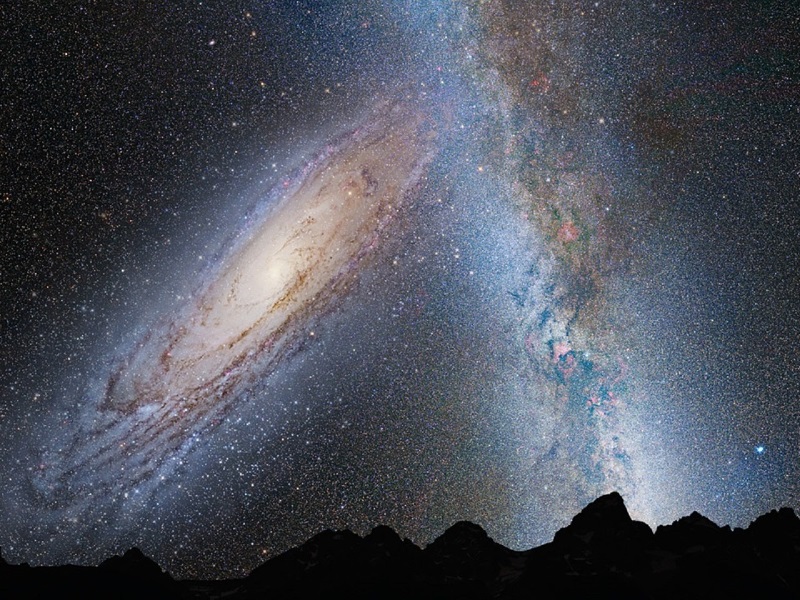- Home
- Science
- Science News
- Asteroseismologists Capture Sounds From the Oldest Stars in Our Galaxy
Asteroseismologists Capture Sounds From the Oldest Stars in Our Galaxy

The researchers from the University of Birmingham in the UK reported the detection of resonant acoustic oscillations of stars in 'M4', one of the oldest known clusters of stars in the galaxy, some 13 billion years old.
Using data from the Nasa Kepler mission, the team has studied the resonant oscillations of stars using a technique called asteroseismology.
These oscillations lead to minuscule changes or pulses in brightness, and are caused by sound trapped inside the stars. By measuring the tones in this 'stellar music', it is possible to determine the mass and age of individual stars.
The discovery opens the door to using asteroseismology to study the very early history of our galaxy.
"We were thrilled to be able to listen to some of the stellar relics of the early universe," said Andrea Miglio, from the University of Birmingham, who led the study.
"The stars we have studied really are living fossils from the time of the formation of our galaxy, and we now hope be able to unlock the secrets of how spiral galaxies, like our own, formed and evolved," said Miglio.
"The age scale of stars has so far been restricted to relatively young stars, limiting our ability to probe the early history of our galaxy," said Guy Davies, from the University of Birmingham.
"In this research we have been able to prove that asteroseismology can give precise and accurate ages for the oldest stars in the galaxy," Davies said.
"Just as archaeologists can reveal the past by excavating the Earth, so we can use sound inside the stars to perform galactic archaeology," said Bill Chaplin, professor at the University of Birmingham.
The research was published in the journal Monthly Notices of the Royal Astronomical Society.
Get your daily dose of tech news, reviews, and insights, in under 80 characters on Gadgets 360 Turbo. Connect with fellow tech lovers on our Forum. Follow us on X, Facebook, WhatsApp, Threads and Google News for instant updates. Catch all the action on our YouTube channel.
- Samsung Galaxy Unpacked 2025
- ChatGPT
- Redmi Note 14 Pro+
- iPhone 16
- Apple Vision Pro
- Oneplus 12
- OnePlus Nord CE 3 Lite 5G
- iPhone 13
- Xiaomi 14 Pro
- Oppo Find N3
- Tecno Spark Go (2023)
- Realme V30
- Best Phones Under 25000
- Samsung Galaxy S24 Series
- Cryptocurrency
- iQoo 12
- Samsung Galaxy S24 Ultra
- Giottus
- Samsung Galaxy Z Flip 5
- Apple 'Scary Fast'
- Housefull 5
- GoPro Hero 12 Black Review
- Invincible Season 2
- JioGlass
- HD Ready TV
- Laptop Under 50000
- Smartwatch Under 10000
- Latest Mobile Phones
- Compare Phones
- Honor Win RT
- Honor Win
- Xiaomi 17 Ultra Leica Edition
- Xiaomi 17 Ultra
- Huawei Nova 15
- Huawei Nova 15 Pro
- Huawei Nova 15 Ultra
- OnePlus 15R
- Asus ProArt P16
- MacBook Pro 14-inch (M5, 2025)
- OPPO Pad Air 5
- Huawei MatePad 11.5 (2026)
- Xiaomi Watch 5
- Huawei Watch 10th Anniversary Edition
- Acerpure Nitro Z Series 100-inch QLED TV
- Samsung 43 Inch LED Ultra HD (4K) Smart TV (UA43UE81AFULXL)
- Asus ROG Ally
- Nintendo Switch Lite
- Haier 1.6 Ton 5 Star Inverter Split AC (HSU19G-MZAID5BN-INV)
- Haier 1.6 Ton 5 Star Inverter Split AC (HSU19G-MZAIM5BN-INV)












